Many visitors have long described Lisbon as an underrated gem and we couldn’t agree more. Portugal’s capital city totally surprised us during a winter visit. We loved Lisbon for the unique attractions, its culture, people and food. Here are some things to do in Lisbon with kids (or without too).

1. Visit Museums
Some of the most unique museums we’ve visited were in Lisbon. There was no shortage of great museums here. Our favorite was the National Tile Museum. Portugal’s renowned decorative ceramic tiles, found in many places, make it only fitting to have this one-of-a-kind museum here.
The Tile Museum showcased the processes involved in making tiles. But, the best parts were seeing the diverse and colorful tiles laid out all over the walls and exhibits.
The museum’s standout attraction was the “Great View of Lisbon.” This panoramic shot of Lisbon in blue and white tiles lined a long wall made up of 1,300 tiles and was 75 ft (23 m) long. Don’t miss the opulent Madere de Deus chapel inside the Tile Museum which was once a convent.
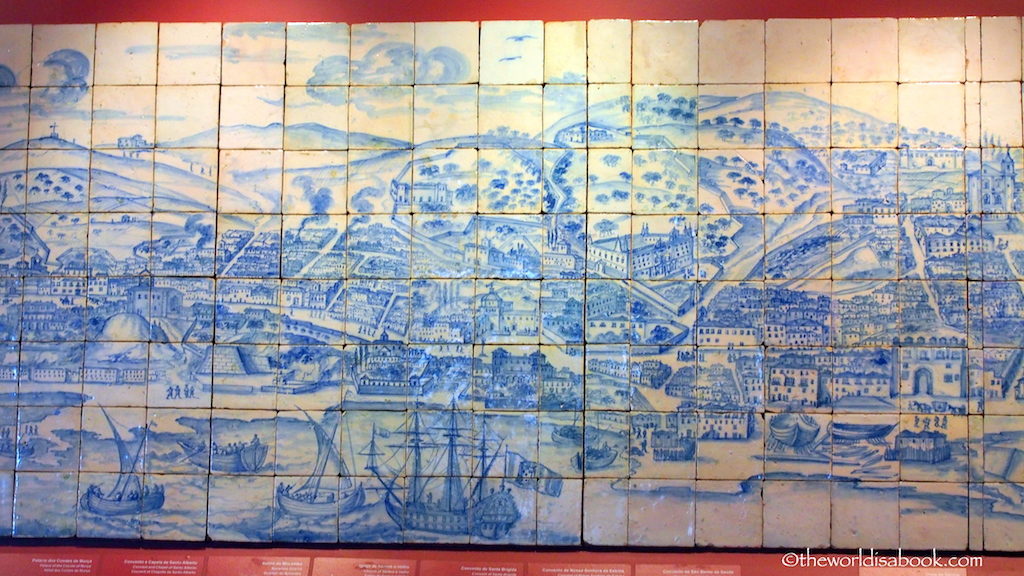
Other great museums to explore include those dedicated to Fado, the enchanting Portuguese music. There is also the Muse Nacional de Arte Antiga or National Museum of Ancient Art which is on a 17th century palace and houses a vast collection of important Portuguese art and national treasures.
If you’re visiting during the first Sunday of the month, many museums and attractions offer free admission. There will be crowds so it is best to either go early or late in the day or pack a bit of patience.

2. Stroll the Parks
Green spaces within a city are a welcome respite among the historic and modern buildings. These are three of Lisbon’s popular parks but feel free to stop at neighborhood parks dotted around the city.
Lisbon’s largest public park is Eduardo VII Park. Located centrally and easily accessible, this 62-acre park offers great city views due to its high ground setting.
It has three greenhouses, sports pavilion, many art pieces and a lake. The park is a popular venue for fairs, concerts and exhibitions.

The Jardim da Estrela or Estrela Garden is one of Lisbon’s prettiest parks. This family-friendly park is located by the stunning Basilica da Estrela.
It offers beautiful landscape of exotic plants and trees, flowerbeds, fountains, a children’s playground, a small lake filled with ducks, various sculptures and a wrought-iron pavilion. This is one of the best places to have picnics.
The Jardim Botanico Tropical is located in Belem near the Jeronimos Monastery. This garden houses over 600 exotic tree and plant species along with a large lake, greenhouses, herbarium, statues and ducks and peacocks to keep the kids busy and entertained.
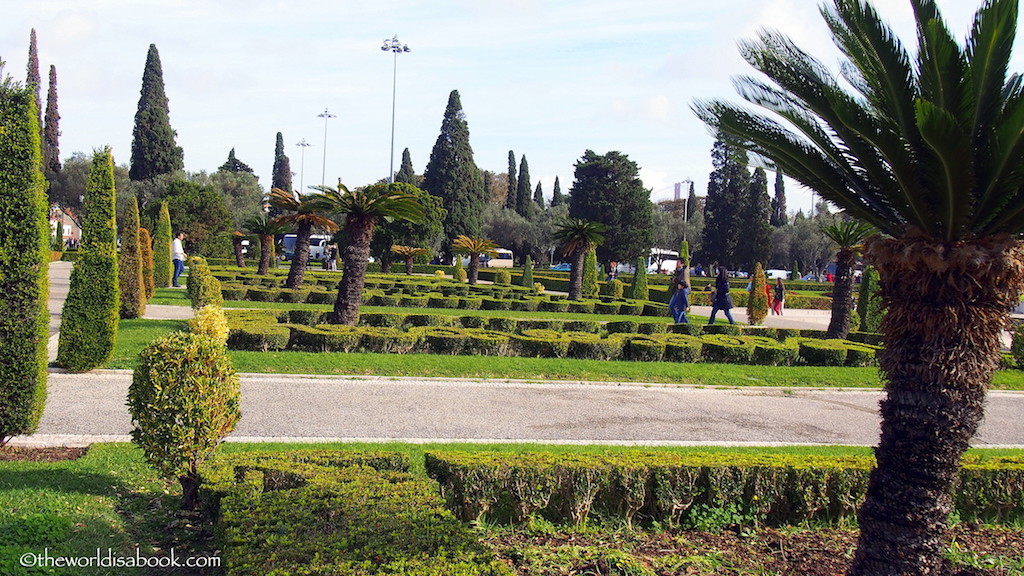
3. Eat pastries
Oh how sweet it is! Lisbon has many bakeries or pastelarias filled with some of the most delicious pastries. This was probably the only city we’ve visited where we ate pastries all day.

The star of all Portuguese pastries is pastel de nata or custard tarts. While there are variations of this dessert all over the country, “the one” pastry any visitor has to try when in Lisbon is pastel de belem.
Visitors can buy it in the Belem district shop. They use the original recipe dating back to 1837. It was so delicious!

If you’re visiting Sintra on a day trip, make a stop at Piriquita to eat the town’s signature dessert. Known as travesseiros or pillows/cushions, this bakery invented this delicious treat of puff pastry, cream egg yolks, sugar and almond.
4. Ride the Elevator
Lisbon, built on seven hills, offers a fantastic opportunity to ride one of its unique elevators for astonishing views. The 19th-century wrought-iron Elevador de Santa Justa serves not only as transportation but also as a popular tourist attraction.
The wood carriages whisk passengers 147 ft (45 m), about seven stories, up from the Baixa district to the Bairro Alto district. There is an observation deck on top for panoramic views of central Lisbon.
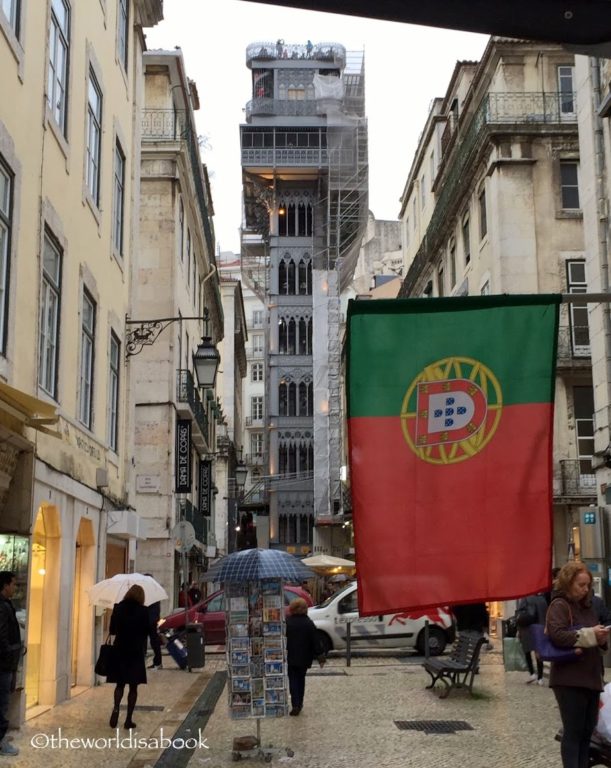
5. Explore Castelo de Sao Jorge
You can’t miss St. George’s Castle or Castelo de Sao Jorge standing prominently over the historic center. The Romans built this citadel as part of a fortification system over 200 years ago on the highest tip of Lisbon’s seven hills. It was also a royal residence for awhile.

We loved seeing Lisbon from above here. The castle walls provided the best place to get a panoramic view of the city overlooking the colorful buildings and red rooftops. It was a wonderful place to walk around and even a moat surrounded the complex.
My kids’ favorite part here was walking along the extensive system of walls connecting the towers and buildings. There were still 11 remaining and intact towers within the castle. The castle offers free guided tours throughout the day at specific times.
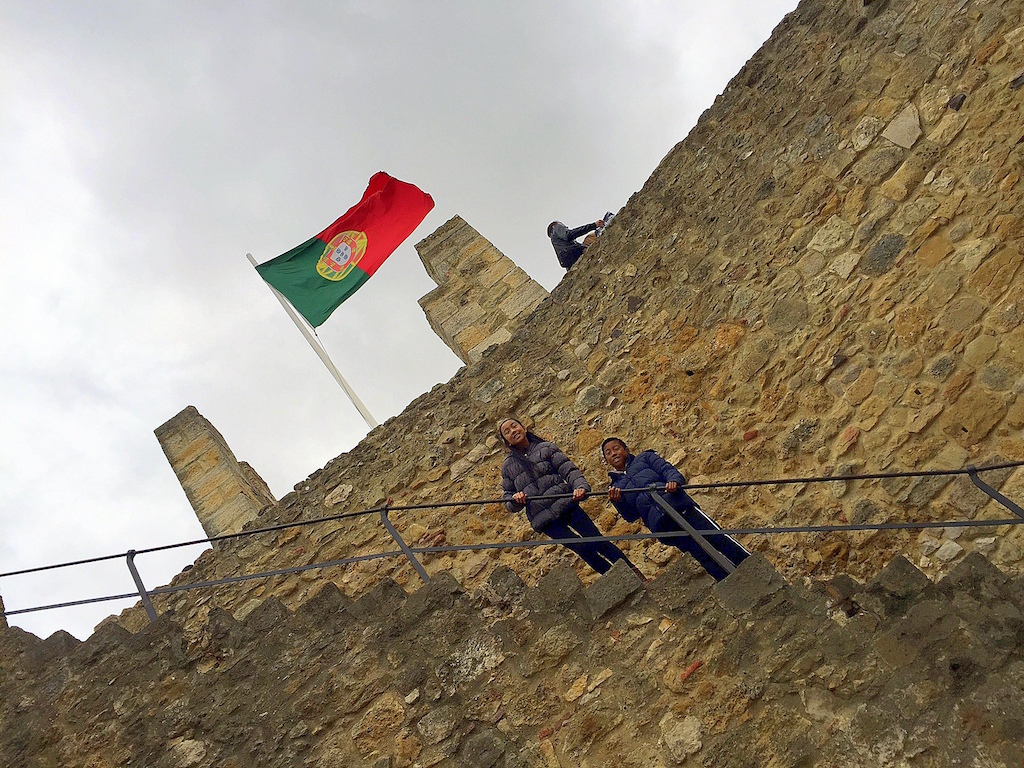
6. Explore Belem
Most of Lisbon’s popular attractions are in the historic district of Belem. Located about 3 miles (5 km) from the downtown area, this area was filled with history and some amazing buildings and worth spending at least a few hours. We enjoyed walking along the promenade adjacent to the Tagus River.
Prominent attractions like the Discoveries Monument and the Belem Tower line the promenade. Visitors can enter and go up these structures for some wonderful views. Marvel at the details of the Discoveries Monument and see some of Portugal’s famed navigators who left from here to explore the world.
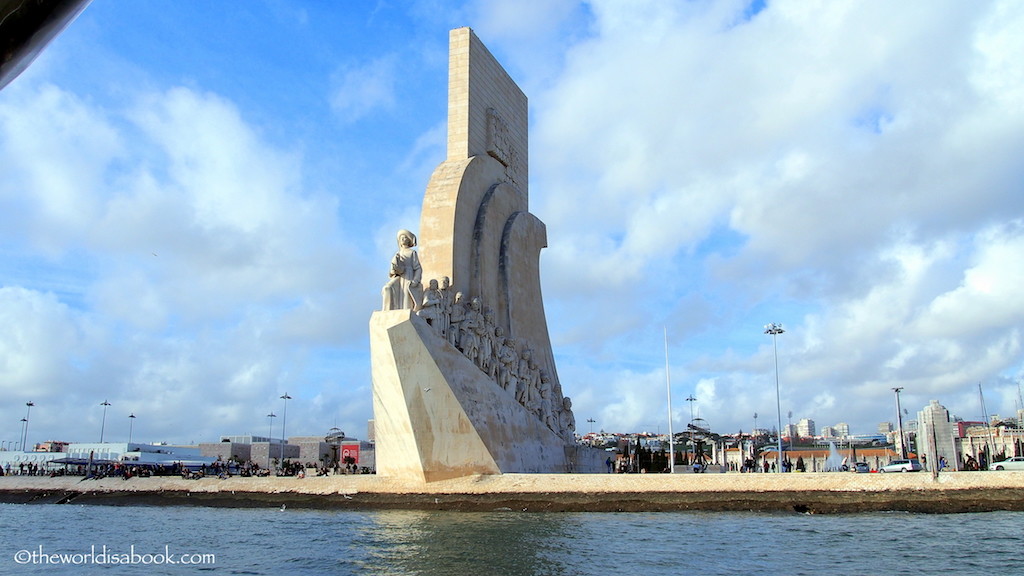
Don’t miss going inside the San Jeronimos Monastery and the Church of Santa Maria de Belem. It was worth the small fee to admire the magnificent architecture, craftsmanship and interior of these buildings. See why they’re UNESCO designated monuments.
The monastery’s highlights were the two levels of cloisters. Filled with many sculptural details, it took almost 100 years to build. Every column was filled wit design or symbols. The church’s highlights were its vaulted ceiling, high altar, colorful stained glass windows and the massive and ornate pillars.

Of course, many visitors also flock to Belem to eat at Casa Pasteis De Belém. This is known as the original home of the Pasteis de Nata or Pasteis de Belém which are the custard tarts sprinkled with cinnamon and powdered sugar. This famous bakery has been selling these treats for over 150 years.
There was a large café at the back but takeaways are also popular for a grab and go option. They make for great snacks while strolling Belem’s promenade. Visitors can also see the bakers making the treats inside.
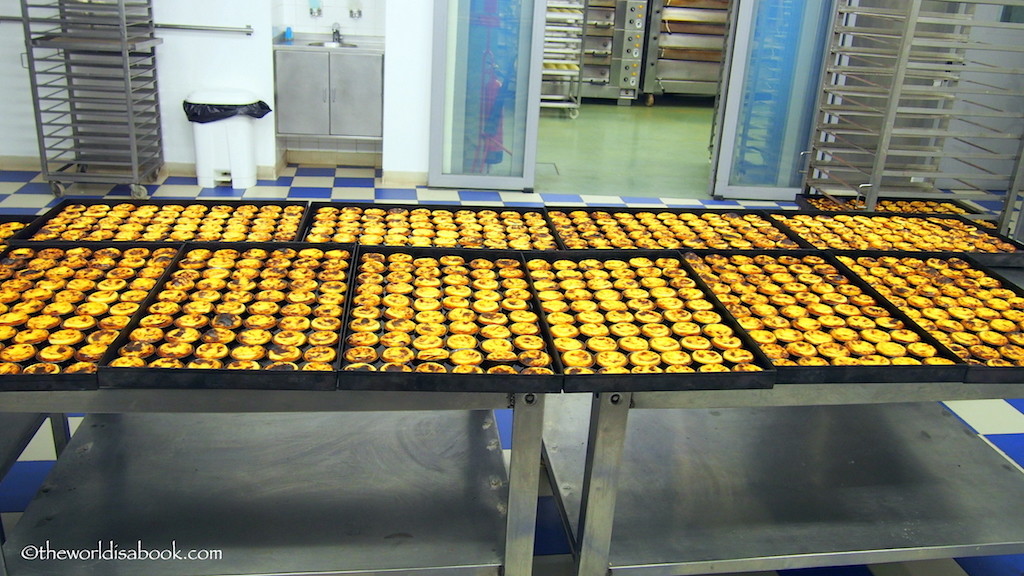
7. Take a Tour
Lisbon is such a wonderful city to explore. One of the best ways to see it is through guided tours. Luckily, there are several options available for visitors.
We did a land and sea tour with Hippo Trip which was on an amphibious vehicle. It was an amphibious vehicle (goes on both land and water) that did a circular route and narrated tour through Lisbon and Belem. We highly recommend doing this 90-minute tour (25 minutes in the river) especially if you’re traveling with kids.
We had a different vantage point from an elevated vehicle with wide-open windows. It was at eye level with many of Lisbon’s tiled buildings and were able to admire the details when we stopped. We also had great views of the monuments from the water.

We learned a lot about Portuguese history, their resilience having survived a devastating earthquake in 1755 and more insights into some of the attractions. Here are some other tour options:
- Lisbon Chill-Out Free Tours offers tours twice daily and operates on tips basis. No reservations needed. Meeting point is at Praça Luís de Camões (Luís de Camões Square).
- Sandeman’s Free Tour also works for tips and offers three tours daily. Tours can be booked online.
- Discover Walks offers 90 minute tours of Belem and the Alfama District. Tours can be booked online.
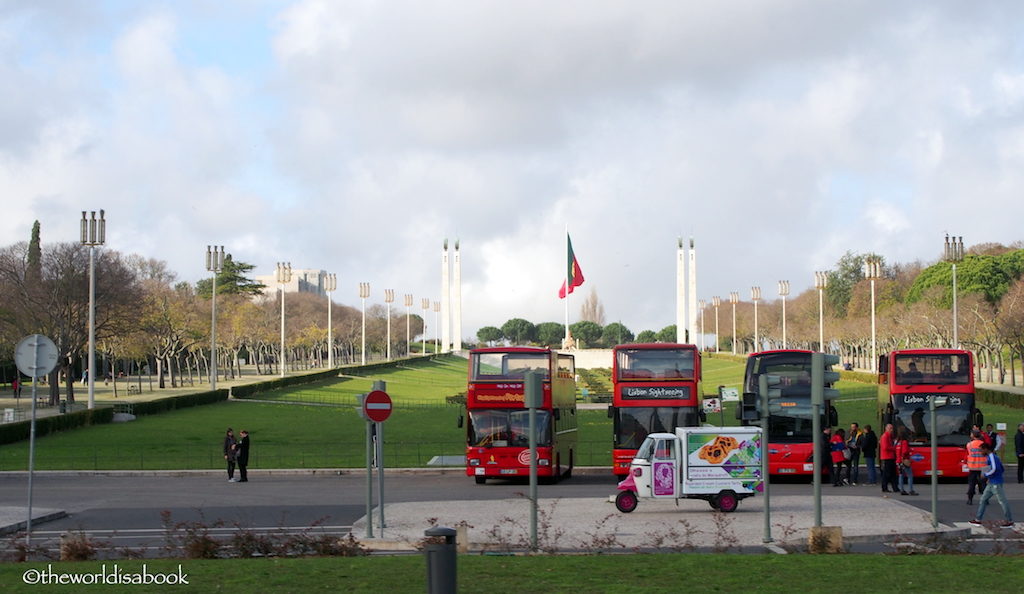
8. Ride the historic trams
Lisbon’s iconic and historic trams are much more than public transportation. They are a popular and efficient way to get around the city and we enjoyed riding them. You’ll see the historic “Remodelado” trams or the modern Siemens “Articulado” trams.
The “Remodelado” trains are the yellow and red ones usually seen to showcase Lisbon. But, the most iconic of these trams is Tram 28 E.
This classic scenic route through some of Lisbon’s historic and picturesque areas and steep alleys make it a very popular and crowded ride through the Alfama, Baixa and Chiado District.
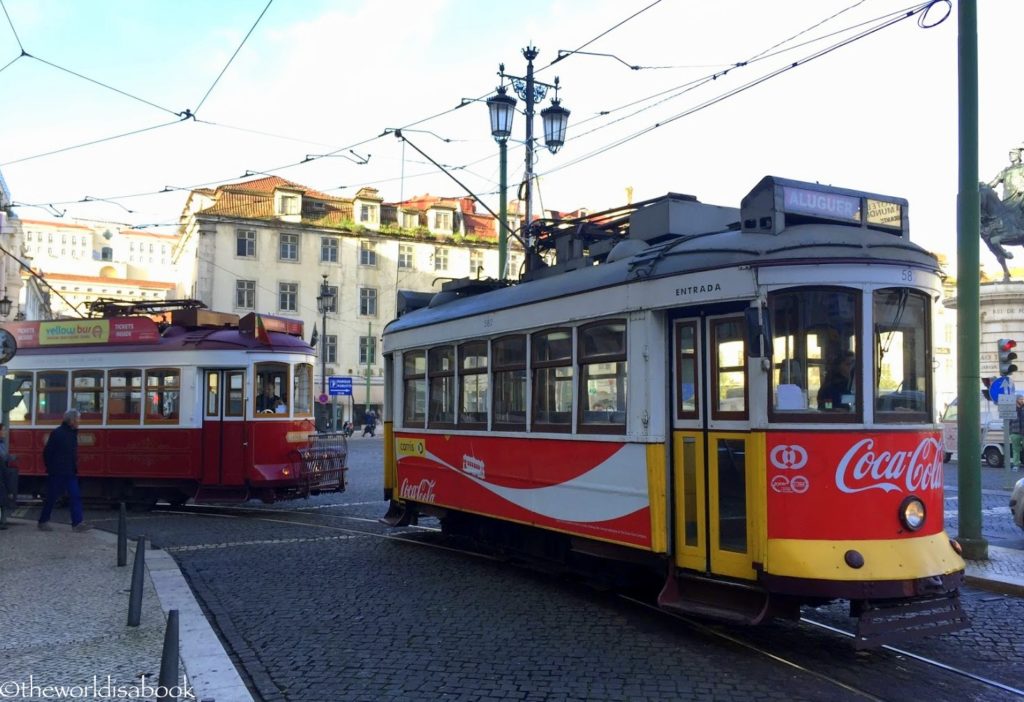
Another popular tram route is the number 15 which connects Lisbon’s Baixa district to the Belem district. The trams provide a wonderful perspective of seeing Lisbon’s neighborhoods. Though, be wary of pickpockets and your surroundings when riding these particular trams.
9. Go Shopping
While it may not compare to Milan’s or Paris’ shopping, we enjoyed walking around some of Lisbon’s shopping areas. It may not have been in our budget but Avenida da Liberdade was a great place for window-shopping. This tree-line street is Lisbon’s version of Paris’ Champs-Elysees with many historic buildings, luxury shops, designer boutiques and fancy-looking restaurant and bars.
If you’re more into large shopping malls for variety, Colombo is Lisbon’s largest shopping complex including many internationally known chain stores. There is also a large food court and cinema complex.
Our Portuguese mall experience was at the modern Centro Vasco da Gama in the Parque das Nações district. If you are in the area sightseeing, this made for a wonderful stop.
The Shopping Districts in Lisbon
The major shopping district in Lisbon is Chiado and its major streets of Rua do Carmo and Rua Garrett. You can find Livraria Bertrand here which the Guinness records as the world’s oldest bookstore. It opened in 1732. It’s a wonderful place to buy souvenirs, local products and find some international chain stores.
Another shopping area to check out is Baixa. This had more shops geared for tourists with plenty of souvenir stores, charming shops and international chain stores.
The main pedestrian shopping street is Rua Augusta which also had several restaurants. We stayed near here and spent everyday walking through Rua Augusta and not surprisingly, never left empty handed
One of our favorite stores in Baixa was Conserveira de Lisboa. This shop has been around since the 1930s and only sells canned fish from Portugal’s waters. The window is filled with bright colored cans and its interior is charming too.
We loved the colorful, vintage designed packages filled with fish, sardines, squid in various sauces. My son and husband have said that these were some of the best sardines they’ve tasted. Many of the souvenir cans we bought never made it home because they kept eating them.
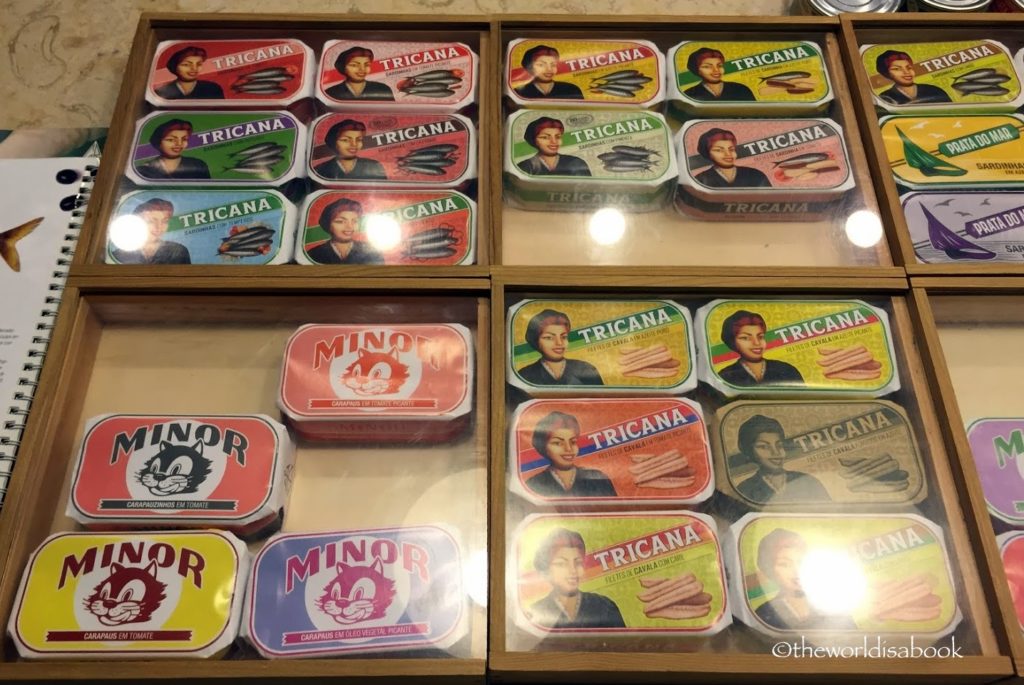
10. Climb Arco da Rua Augusta
It’s hard to miss the imposing arch at the end of the pedestrianized street of Rua Augusta. The 19th century arch was built to symbolize Lisbon’s rise and recovery after the 1755 earthquake that destroyed and devastated the city.
Visitors can go to the top of the arch for panoramic views of the Tagus River, the Baixa district and Praça do Comércio. It’s one of the best places to people watch. Learn about the arch’s history in the Clock Room exhibit.

If you can’t go to the top of the arch, look around its impressive exterior. There are six columns that support the arch and adorned with large statues.
The highest point has the statue of Glory crowning Genius and Valor. There are also other statues of Portuguese historic individuals.
11. Ride a Tuktuk
They can be found all over Lisbon and almost looks like you somehow got transported to Asia’s streets when you see them all parked. The tuk tuks only recently became quite popular here as drivers navigated the narrow and steep streets. They provide the ideal way to transport people in the historic neighborhoods of Alfama, Grava and Bairro Alto and around its steep streets.
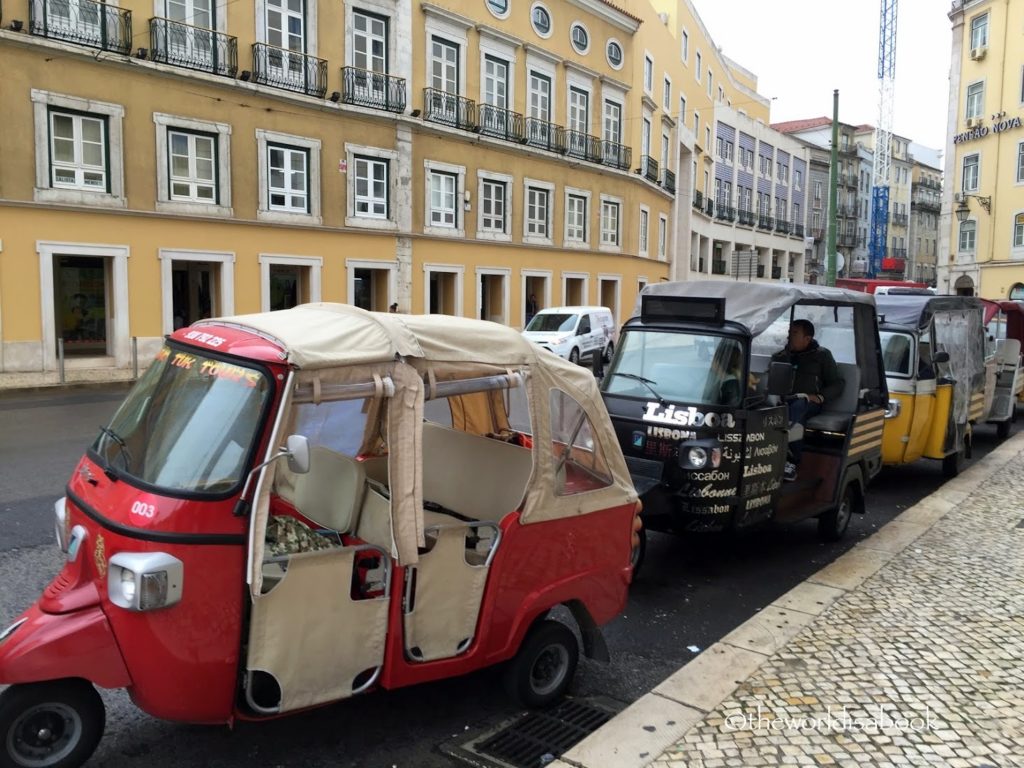
Various tuk tuk tours are available depending on duration and route and can accommodate up to six passengers. Some also accept special requests. Many of the tuk tuks can be found parked in Largo das Portas, Praca da Figueira, Praca dos Restauradores and Rossio Square.
12. Go inside churches
Like many European capitals, there is no shortage of beautiful cathedrals and churches in Lisbon. One of the most popular is the 12th century Sé de Lisboa or Lisbon Cathedral in the Alfama district with its twin towers and rose window
One of the smaller churches we visited was the Igreja de Santo António de Lisboa or Santo António Church near the Lisbon Cathedral. This is dedicated to St. Anthony of Padua or St. Anthony of Lisbon (Portugal’s patron saint) who was born on this site in 1195. St. Anthony is a patron saint of many and this has become a popular site for visitors.

There is also the 17th century Igreja de Santa Engrácia, also known as the National Pantheon. It is the final resting place of famous and important Portuguese citizens. The church has an impressive white dome seen from many lookout points and a major part in the city’s skyline.
My favorite church in Lisbon was definitely the church adjacent to the 16th century Jeronimos Monastery in Belem. This was grand, opulent and such incredible architecture worthy of its UNESCO World Heritage site designation.

13. Hunt for Tiles
Tiles or azuelas are found almost everywhere in Lisbon from building walls to fountains, street signs, train and metro stations to sidewalks. They are one of the best things that added to Lisbon’s charm and uniqueness. We loved admiring them during our sightseeing walks and while visiting attractions.
Portugal has turned these tiles into an art form even though tile glazing originally started in Egypt. They have become a leading tile producer and incorporated them into their architecture, culture and lifestyle.

Look up, down and around while walking in Lisbon. It’s hard to miss the tiles embedded into streets, buildings and interiors. Buy a tile or two for inexpensive souvenirs.
If you can, don’t miss visiting the Tile Museum (see #1 in this post). Some major places with high concentration of tile work are in Sao Vicente de Fora Monastery, House of Ferreira das Tabuletas in the Chiado area, Oriente train station and Palace of the Marquesses of Fronteira.
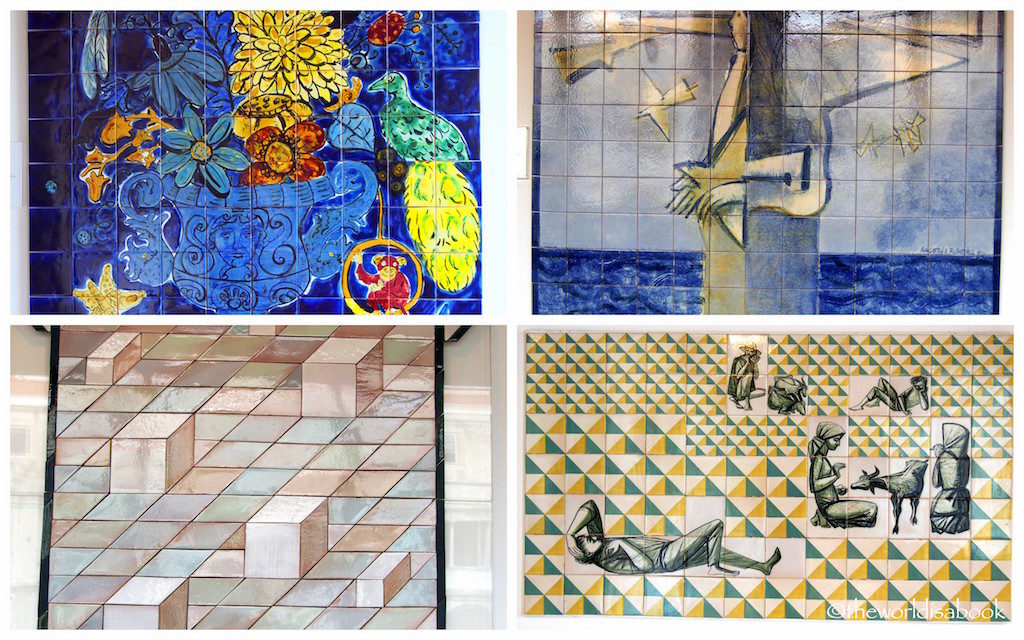
14. Take a day trip to Sintra
A very popular day trip from Lisbon is to the charming town of Sintra which was an easy train ride. This charming town was filled with a palaces and castle wall among other things. It is a wonderful place to walk around and explore.
The highlight during our visit was definitely the very colorful Pena Palace. The details and architecture were beyond amazing. We had a short tour of its interior and walked its grounds and understood why this is one of Portugal’s most visited attractions.

Another can’t miss attraction is the Moors Castle which had interesting archeological finds and history. The panoramic views of Sintra from here were worth the trek. But, my kids’ favorite part was walking the stone walls that connected the lookout towers.
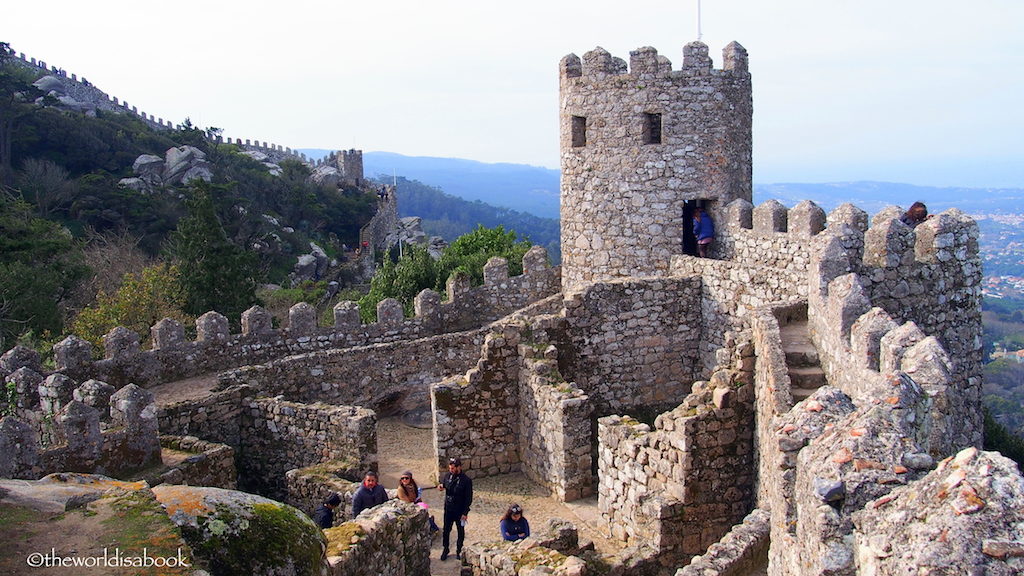
If you have more time, another popular day trip from Lisbon is Cascais which is an easy train ride. It is a coastal resort town with beaches, a marina, museums and historic buildings.
On our return trip, I would love to go to Evora for a day trip. This enchanting town is full of historic and beautiful buildings, churches, an aqueduct and Portugal’s second oldest university.
15. Go Biking
Another fun way to see Lisbon is to bike along its waterfront. Visitors can rent bikes and follow some cycling paths or join one of several bike tours around the city.
Having done bike tours in Paris and Versailles, this really was a wonderful orientation to any city. Don’t worry, most of the bike routes don’t go on Lisbon’s steep hills.
There are about 20 km of dedicated bike paths along the waterfront and Tagus River on flat surfaces. The most popular route is the 10-mile (17 km) section passing through Praca do Comercio, under the 25 April bridge and end at the Belem area. Jump e-bikes are available on the Lime app for easy rentals.

There are various companies offering bike tours depending on time constraints or routes.
16. Hang out at public squares
One of things we love about Europe is its plazas and public squares scattered around their towns and cities. There was no shortage of beautiful squares to explore and people watch in Lisbon.
One of the most popular and picturesque squares is Praca do Comercio or also known as Terreiiro do Paco (Palace Square) overlooking the river and anchoring the Rua Augusta pedestrian street. This U-shaped square has an imposing statue of King Jose I on horseback and the massive Arco da Rua Augusta.

We hung out a lot at Rossio Square (officially called Pedro IV Square) because it was near where we stayed. It was hard to fathom that this was once the location of public beheadings and bullfighting.
I love the beautiful patterns on its cobblestones, its wide-open spaces with trees, fountains and surrounding cafes and bakeries. There was also a small Christmas market during our visit here.

Another beautiful public area is Praca dos Restauradores. The 30 m tall obelisk defines this square. If you’re in the Belem area, Praca do Imperio is worth a stop for the garden in the center, proximity to the river and the beautiful buildings surrounding the square.
17. Explore the Alfama District
We also love exploring the old town centers of Europe’s major cities. It’s so interesting to see the architecture and learn the history. The quaint and charming Alfama District is Lisbon’s oldest area filled with meandering cobblestoned streets, narrow alleyways and steep hills.

Located at the bottom area of Sao Jorge Castle and the water, there are remnants of the old city walls. The best way to see this area is getting lost on its maze of streets.
There are plenty of historic buildings, small public squares, charming cafes and houses, colorful shops and fantastic views. It’s been called “a village within a city” and almost feels like you stepped back in time.
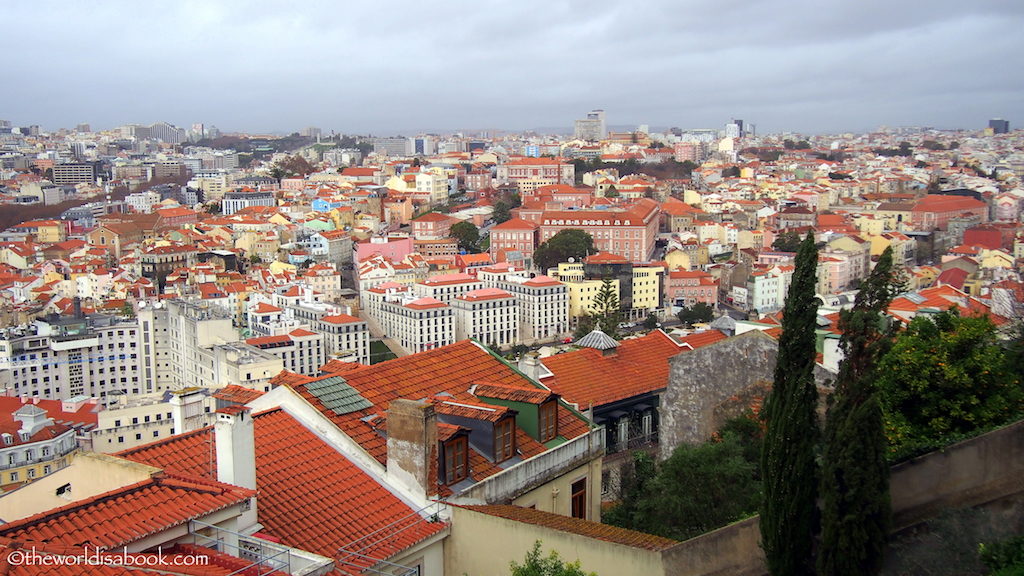
18. See the Lisbon Oceanarium
Europe’s second largest aquarium, the Lisbon Oceanarium, is one of the most family-friendly attractions in the city and highly recommended by the locals. The structure almost looks like an ultra-modern oil rig coming out of the Tagus Estuary.
The aquarium has over 450 various animal species in many exhibits and particularly in the large central aquarium. There’s no shortage of popular marine creatures here from penguins, moray eels, sharks, stingrays, sea otters, tropical fish and corals. There are also several activities for families from guided tours, sleepover with sharks, birthday parties and fado concerts (traditional Portuguese music) with kids.
19. Ride the funiculars
Lisbon was built on seven hills. Luckily, there is a network of funicular railways that transport residents and tourists across some of the steepest neighborhoods. The historic Ascensor do Lavra was Lisbon’s first funicular dating back to the late 1800s.
Another funicular dating back to 1885 is the electrical Ascensor da Glória or Glória funicular. The ride is 275 m long and runs between São Pedro de Alcântara and the Restauradores square over an 18-degree slope. This is a magnet for graffiti artists so you never know how it will look on your next ride.

This is the most popular and busiest especially on weekends as it transports people between Baixa to the Bairro Alto areas. Don’t miss the scenic views of Lisbon from the Miradouro de Sao Pedro de Alcantara at the top of the funicular.
Another funicular not to miss was Ascensor da Bica. This is considered the most picturesque of Lisbon’s funiculars as it travels through the Bairro Alto and Bica areas passing through quaint shops and historic buildings. The top area is also home to nearby Miradouro de Santa Catarina for some fantastic views.
20. Eat at Mercado da Ribeira
One of our favorite stops at any city is its food and local markets. Mercado da Ribeira has been the city’s main food market since 1892. The ground floor is the traditional market reminiscent of its past selling fruits, vegetables and fresh fish among other produce.
It was taken over by Timeout Lisboa and became known as the Timeout Market a few years ago. The upstairs area, known as the food hall, includes many food stalls with communal tables.
We ate here twice and loved the variety of food and the lively atmosphere. It is one of the best places to sample local cuisine (some from renowned chefs), Portuguese treats and wines and of course, more custard tarts.
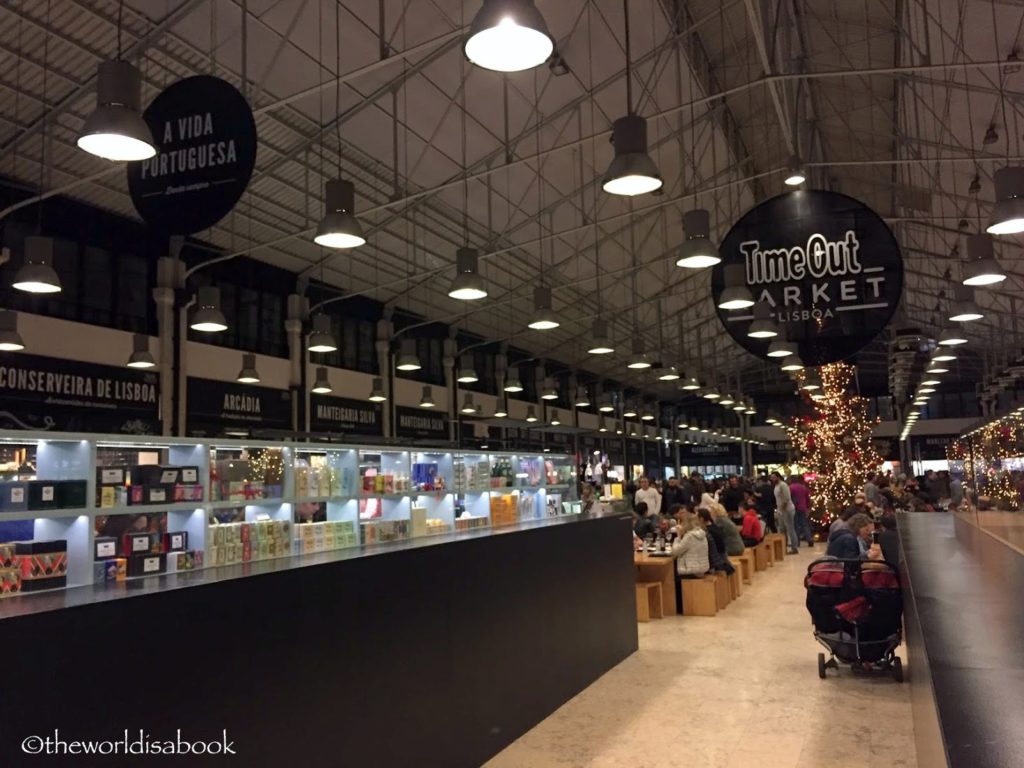
21. Visit Parque das Nações (Park of Nations)
Lisbon is dotted with historic buildings giving it that old world European feel. But, it also has a modern side that is worth visiting.
Parque das Nações or Park of Nations, also locally known as Expo Park, was built for the 1998 Lisbon World Exposition. It offers many attractions for the whole family whether you’re a tourist or a resident.
One of the world’s longest bridges, Vasco da Gama Bridge, lines the waterfront along with many pedestrian areas, parks and gardens. If you want to see the area from above, take a cable car ride over the Tagus River here or go up to the Vasco da Gama Tower’s observation deck for panoramic ocean views.

The Oceanarium, one of Europe’s best and largest, is located here along with the ultra-modern Gare do Oriente train station designed by famed Spanish architect Santiago Calatrava.
The area is filled with plenty of shopping opportunities, restaurants, public art, activities and modern architecture structures. This was a different side of Lisbon and we really enjoyed spending time here.
The World Is A Book contains affiliate links and is a member of the Amazon Services LLC Associates Program. If you make a purchase using one of these Amazon links or any of the product links, we may receive compensation at no extra cost to you. See our Disclosure Policy for more information.
Check out these Lisbon tours!
Pin it for later!
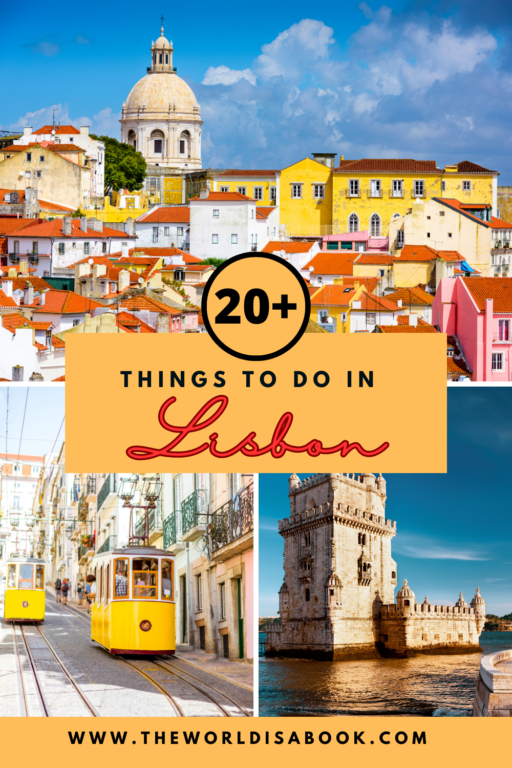
It offers many attractions for the whole family whether you’re a tourist or a resident. The ground floor is the traditional market reminiscent of its past selling fruits, vegetables, and fresh fish among other produce. there is a network of funicular railways that transport residents and tourists across some of the steepest neighborhoods.